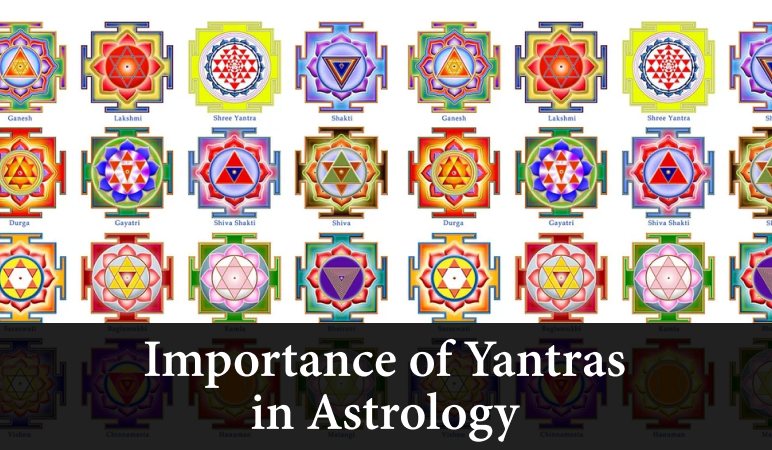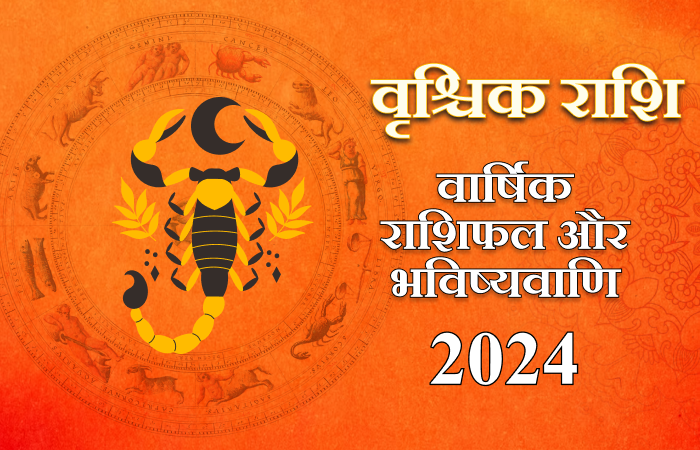Significance of Yantras in Hindu Culture and Benefits

We often hear about mystic instruments like yantras and pyramids for astrological or Vastu-related remedies. The purpose of the instruments is to correct the defects in the interiors or exteriors of your house or eliminate the negative energy or evil forces from your living space.
Traditionally, Yantras find their place in temples near the idols of the deity, on altars or near the entrances to homes. In southern India, you will find Sanatan Hindu drawings, known as kolam (rangoli), in the shape of yantras at the entrances of homes during religious festivals. It is a tradition in many places in southern India to draw it almost every day. It is believed that these geometrical shapes, known as yantras, can be very beneficial in changing the energy flow of a place.
So, what are these yantras? How do they work? Are they really beneficial? Let’s find out more about it.
The Significance of Yantras in Hindu Dharma
A yantra, also called a mandala in many parts of India, is a sacred figure or symbol in simple geometric forms, designed symmetrically. These mystical diagrams originated in Sanatan Hindu culture and have strong astronomical aesthetics. These yantras carry the significance of a mantra. It can be etched on a plain surface, made in a three-dimensional form or used as an amulet or charm. Adi Sankaracharya is one of the prominent Sanatan Hindu sages and scholars whose literary work titled ‘Saundarya Lahiri’ is a masterpiece that talks about yantras.
The meaning of Yantra is ‘instrument or apparatus’. It originates from the Sanskrit word ‘yam’, and its literal meaning is ‘to control, bind, curb or influence’. These are powerful Sanatan Hindu symbols and symmetrically drawn geometrical diagrams that represent the union of the two primal cosmic energies of Shiva and Shakti. It is a tool that bridges the gap between a worshipper and divinity. They act as a support for divine invocations in Sanatan culture.
Yantras are also diagrammatic or geometrical depictions of different mantras. They are known for resonating positive energies and dispersing negative energies, further elevating spiritual consciousness in individuals. They create an environment of positive energy flow and also cleanse and energise the atmosphere around where they are placed with positivity.
What are the Different Types of Yantras?
According to ancient Vedic texts, there are different kinds of yantras designed for different purposes. The geometrical designs of yantras are three-dimensional but are depicted as two-dimensional if etched or drawn. The different types of yantras are planetary yantras, numerological yantras, yantras dedicated to different gods and goddesses, and many others. According to ancient Sanatan Hindu Vedic texts, the ‘Shri Yantra’ is one of the most powerful and auspicious among all yantras. It carries the energies of all the gods and goddesses.
Yantras are Subtle Energy
All the divine symbols like OM, Swastika or Trident in Hinduism have a distinct shape, and each one emits a specific frequency of cosmic waves and cosmic energy patterns. Yantra can be drawn on paper, wood, gemstones, metal, or earth, or it can be given a three-dimensional shape. It would attract cosmic energies for Yantra science, which is based on sacred Vedic geometries representing scriptural mantras.
Yantras are Powers of Mantras Derived Through Powerful Geometrical Designs
There are geometric shapes in yantras that create a subtle range of cosmic force that harmonises with the invoked energy. When a Vedic mantra is chanted, the layers of energy in the microcosm vibrate at the same frequency as the matching energy present in the macrocosm, creating a harmonious resonance between the individual and the universe. In this way, the energy of the yantra and mantra surfaces from creation as a whole (the macrocosm).
Yantras are sacred diagrams that are also commonly referred to as the “mandala” in Sanskrit. They are the visual representation of the specific mantra. Yantras are sacred instruments that comprise symbols and geometric forms, aligned in a symmetrical design. The yantras are generated by divine mantras, which are also the driving force of yantras. Usually, yantras are ruled by a specific deity, or planets or mystical forces, designed for a specific purpose. In layman’s language, yantras are holy objects that hold the supreme energies of the gods and, when energised and worshipped daily, can help us achieve our desired goals.
When you offer puja to a yantra by chanting the respective mantra that is meant for it, it can vibrate positive energies, destroy negative energies and help in the spiritual elevation of an individual.
Yantras work on the divine vibrations of the mantras and help to connect to the energies of the divine through this process. Yantras can also be described as diagrams that are based on religion and are symbolic of ‘ultimate reality’. They can also be defined as objects holding divine astronomical powers and aesthetics.
Which Objects Are Used to Make Yantras?
Wood, metal or cloth can be used to draw or etch yantras. They can be made in three-dimensional forms or in the form of an amulet or charm that one can wear or carry on an everyday basis. One surprising fact about the Yantra carved on different metal sheets is that every metal sheet has a different mantra etched on it, which holds special significance.
What Are the Properties of Yantra?
There are various types of yantras, and each yantra is dedicated to a deity, a celestial body or a specific energy associated with it. A divine symbolic visual representation of the mantra, yantras are a source of supreme energy. Created by the vibration of the sound of the mantras chanted, yantras can be referred to as the magnetic field that, when energised, amplifies the force of energies to help one attain union with the divine.
Yantras attract divine cosmic rays that are emitted by cosmic bodies. They work with divine energies to nullify the negative energies and transform them into positive energies. Once the energies become positive, they become one with the atmosphere wherever they are installed.
What are the Analogies of Yantras?
When you look at yantras, you will find certain shapes and symbols in them that make up the entire yantra. These symbols include bindu (dot), trikona (triangle), chakra (circle), shatkona (six-pointed star) bhupura (square) and Padma (divine lotus)
All the yantras are made up of signs, and these signs are symbols with a deep meaning. Here you can learn about the different symbols that you can witness while taking a closer look at the Yantras:
Guru Gyan Bindu
A “Bindu” that is a “Dot.” is referred to as “Guru Gyan Bindu” in the world of yantras. This dot represents energy and its intense concentration in the centre. Also referred to as the cosmic radiation centre, this dot is bounded by different surfaces such as a triangle, a hexagon, and a circle. The bindu depicts the union with the creative energy that controls the yantra.
Guru Gyan Trikona
This symbol ‘Trikona’ meaning ‘Triangle is referred to as the ‘Guru Gyan Trikona’. The emblem of Shakti, the absolute female energy of the Divine, completes the creation of both the material and spiritual worlds. The triangle pointing down represents the Yoni, which is the source of all creations. It is a water element. If it points upwards, it means a strong spiritual desire and a fire element. The fire element represents Shiva and the water element represents Shakti.
Guru Gyan Shatkona
This Shatkona’ meaning ‘Hexagram’ is a symbol that displays two triangles that are interlocked and inverted in the form of a star sign (six-pointed star). The Shatkonas are referred to as the ‘Guru Gyan Shatkona’ in the world of yantras. An archetypal amalgamation of two triangles, as seen in all the yantra, it symbolically signifies the divine union of Shiva (male energy) and Shakti (female energy), believed to be the roots of creation.
Guru Gyan Chakra
This Chakra’ meaning ‘Circle’ is a symbol referred to as the ‘Guru Gyan Chakra’. It symbolises rotation, a central factor in the macrocosmic continuation function. It also denotes perfection and the peaceful creation of the void, known as the Vishudha chakra. It represents the air element in the series of the five fundamental elements.
Guru Gyan Bhupura
This ‘Bhupura’ meaning ‘Square’ is referred to as the Guru Gyan Bhupura. It resides in the physical body and represents the earth element. Yantra starts with the dot and ends with the square. It depicts how the cosmos evolves. It commences with the subtle energies at the centre, with granular energy at the ether and then reaches its peak in the earth.
Guru Gyan Padma
This ‘Padma’ meaning ‘Divine Lotus’ is a symbol referred to as the ‘Guru Gyan Padma. All the Vedic and other Sanatan holy scriptures consider the lotus to be the divine emblem of purity placed inside the chakras. A lotus in Yantra denotes the Supreme and Absolute Truth of the unconditional force. The lotus is also a divine seat for devas (gods) and devis (goddesses). It grows in the mud but remains untouched by even a tinge of mud, representing detachment and maintaining the original appearance and nature, symbolising purity and divinity.
For more insights into the yantras and their remedial measures, you can consult our astrologers at NamoAstro and seek their guidance.









